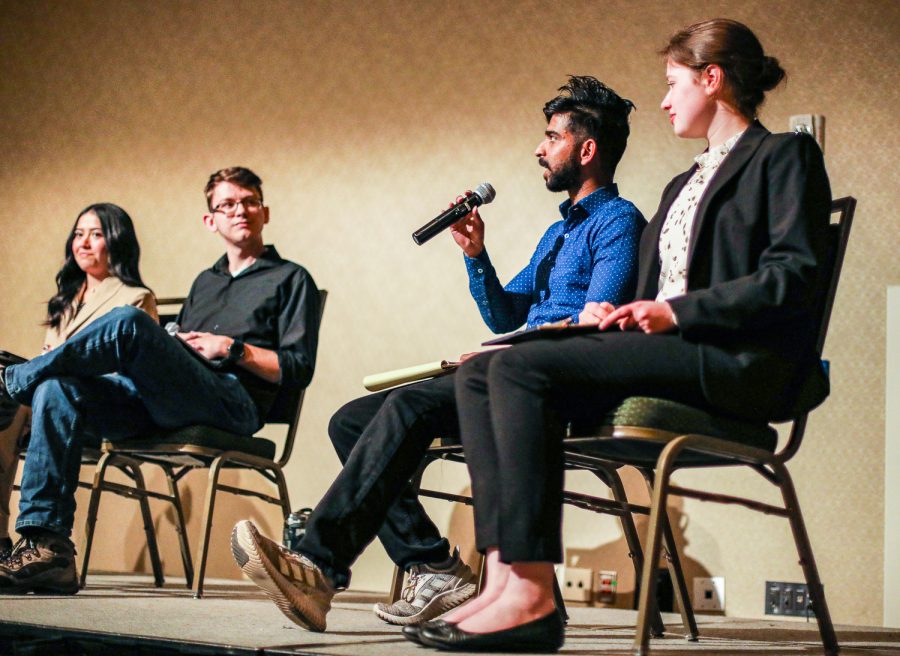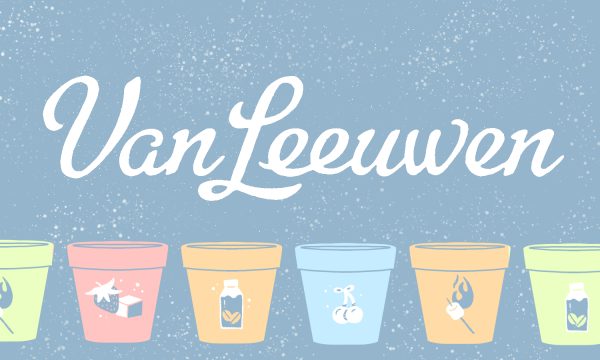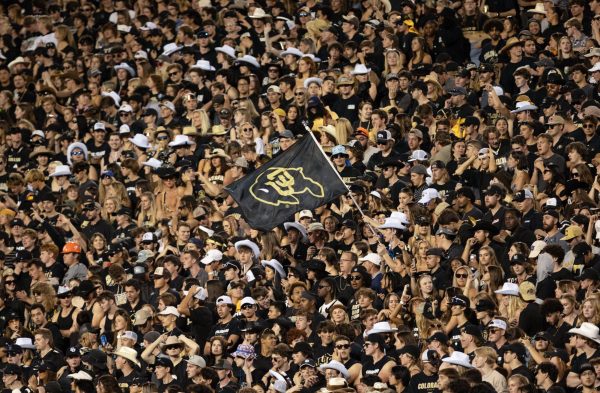ASCSU elections: President, vice president debate
Collegian | Serena Bettis
Associated Students of Colorado State University presidential candidate Rithik Correa discusses his and running mate Jessica Laffey’s campaign platform at the president and vice president debate in Lory Student Center Ballroom A March 29. CSU students can vote for ASCSU’s executive leadership on RAMweb April 3-5.
March 30, 2023
The Associated Students of Colorado State University presidential and vice presidential debate was held Wednesday, March 29 in the Lory Student Center Ballroom A and streamed by CTV on their YouTube.
Despite some early production hiccups, including the ballroom being plunged into complete darkness in the middle of an answer by vice presidential candidate Emily Aschenbrenner, the debate mostly ran smoothly, covering a large number of questions both prepared for the candidates ahead of time and taken from the audience watching the livestream of the event.
The debate allowed the four pairs of candidates to discuss their platforms and what made their campaigns stand out from the others presented on stage through a series of both individually targeted questions and group questions on a range of issues that impact the CSU student body, notably U+2 and the disconnect in recent years between ASCSU and the students they are intended to represent.
Presidential and vice presidential candidates Nick DeSalvo and Alex Silverhart focused heavily on their record as members of ASCSU and expressed their intention to continue the work they had already begun through their administration if elected.
DeSalvo served as ASCSU speaker of the senate over the last year and Silverhart as the director of health for ASCSU. The two mentioned their action on U+2 by bringing up that DeSalvo was the only candidate involved in Wednesday’s debate to approach the Fort Collins City Council about the issue. Actions of DeSalvo and the City Council Action Committee of ASCSU have culminated in an agreement DeSalvo claims to have made with a Fort Collins City Council member to put U+2 on the ballot to be voted on by Fort Collins residents if enough students show up to an April 4 City Council meeting in support of the action.
This connection to city government was reiterated by DeSalvo and Silverhart when they brought up their endorsements from several members of the Fort Collins local government, including Fort Collins Mayor Jeni Arndt and outgoing ASCSU president Rob Long.
The two also discussed Silverhart’s record of action as the director of health, specifically his work in providing free pregnancy tests to CSU students as well as the need to educate students about the services already offered at CSU that have been poorly communicated by ASCSU previously.
Presidential and vice presidential candidates Mia Ritter and Sammy Trout focused heavily on their own experiences as members of ASCSU, having more than five years of involvement with the organization between the two of them.
Ritter and Trout’s platform is largely based on the ideology of “nothing about us without us,” Trout said during the debate.
Whether addressing the members of their administration, U+2 or the issue of accessibility for disabled students on campus, Ritter and Trout reiterated through almost every answer that those most affected by an issue should be the ones to lead the charge on that issue. Their campaign promises include developing better collaboration between offices like the Student Disability Center and El Centro to ensure minority voices are heard in student government.
Ritter and Trout also focused explicitly on the need for input and engagement from the students of CSU in response to the perceived disconnect between student government and the student body on campus in recent years.
Presidential and vice presidential candidates Rithik Correa and Jessica Laffey’s campaign platform rests on their understanding of the inner workings of ASCSU, specifically concerning committees that already exist and are simply not being used to their full potential, such as the Student Fee Review Board, which should involve more input from the student body than it currently does, Laffey said.
The duo proposed to create another board similar to the SFRB called the Student Tuition Review Board, which would review what students’ tuition is being used toward.
Presidential and vice presidential candidates Ashton Duffield and Emily Aschenbrenner broke the mold of candidates running by having a vice president who hadn’t served time in ASCSU.
The pair says this is a strength of their campaign. Bringing in a fresh outside perspective is what the duo said is necessary to bring real change to ASCSU and better connect to the student body.
Duffield and Aschenbrenner focused heavily on their campaign promise to better the culture of campus dorms and provide better services for those living on campus.
Duffield also explained that the two were focused in their campaign on listening to what the student body wants, claiming that they would take no action before listening to the will of the student body if elected, instead focusing on a grassroots, face-to-face approach to communication that has been lost since the pandemic, Duffield said.
ASCSU voting will run from April 3-5 and will be accessible through RAMweb. With declining student turnout in recent years and the docket of important issues that ASCSU holds sway over, there was an appeal from candidates for students to vote and make their voices heard in this year’s elections.
Reach Grant Coursey at news@collegian.com or on Twitter @GrantCoursey.








Ethan • Mar 31, 2023 at 10:01 am
It was belittling to hear candidates say “Well if you don’t attend this one thing you don’t care about the issue at hand” There a lot of issues students care about but do not have the time or bandwidth to do. Was very disheartening to hear that broad assumption against students who care and want to see REAL change on campus.